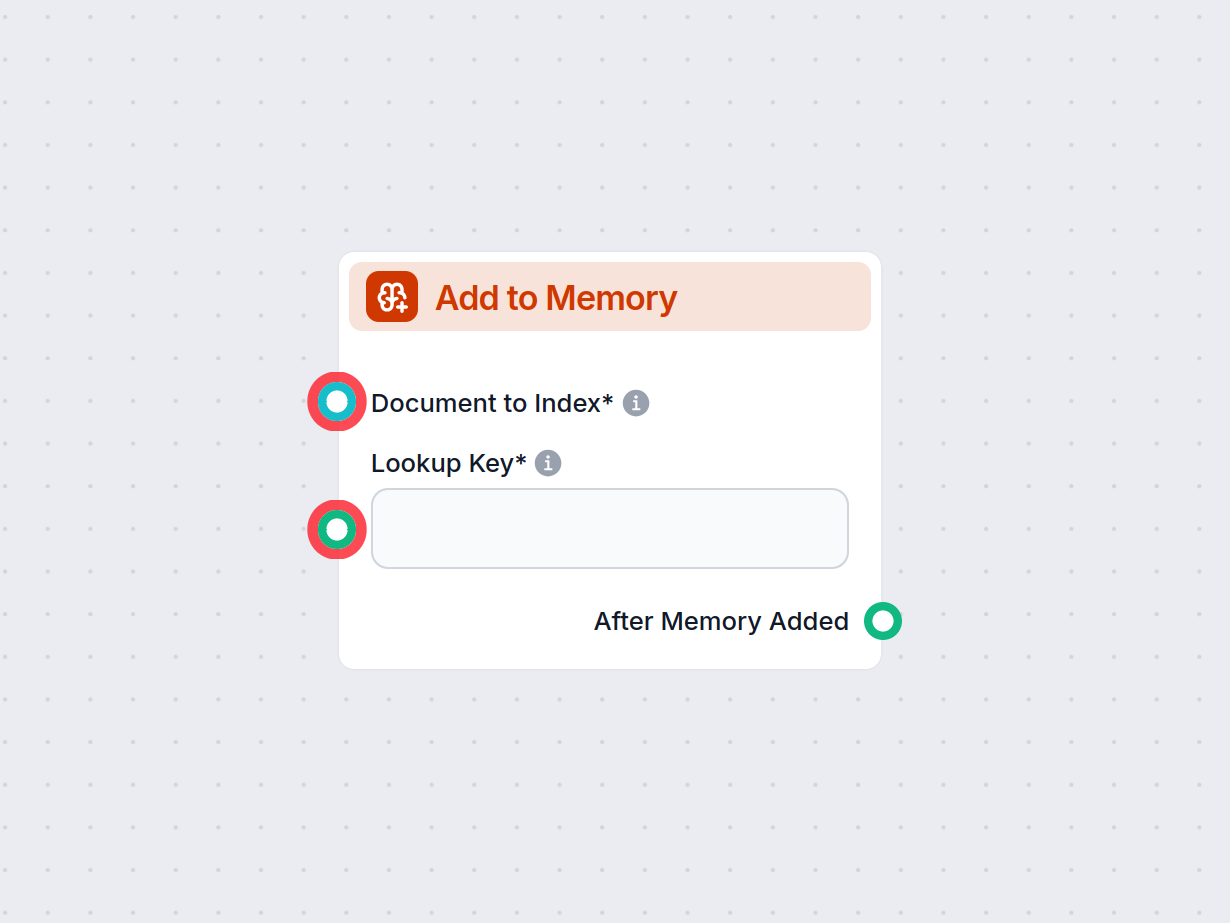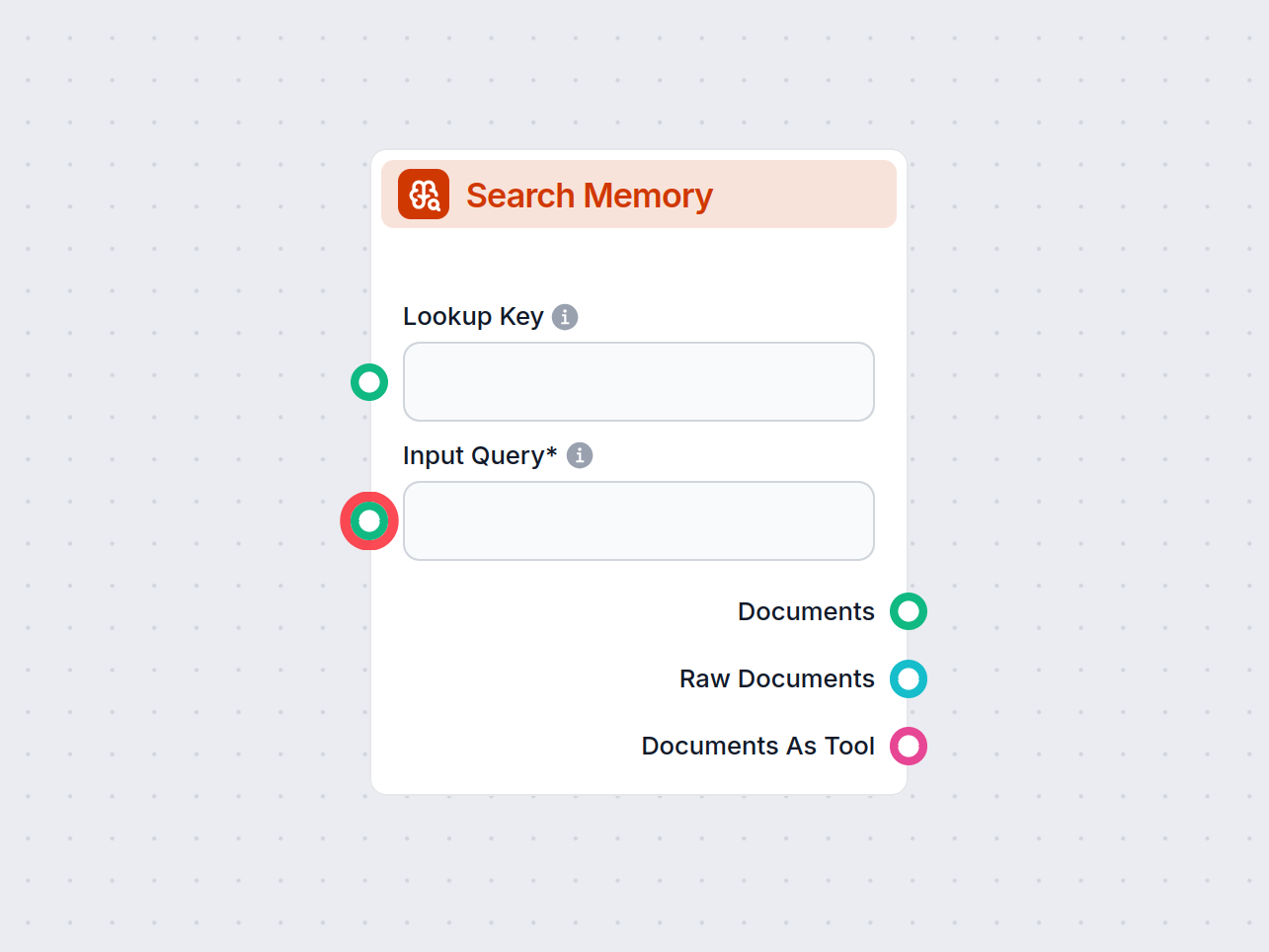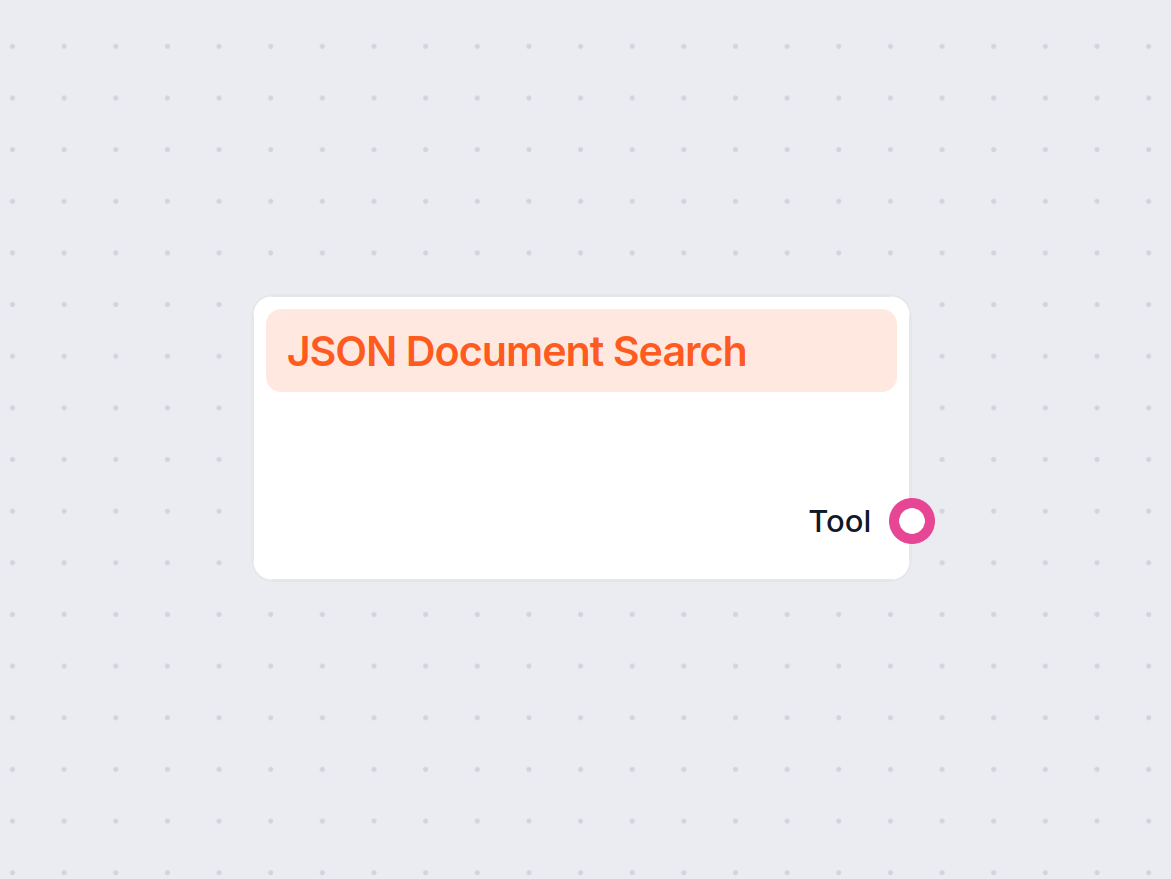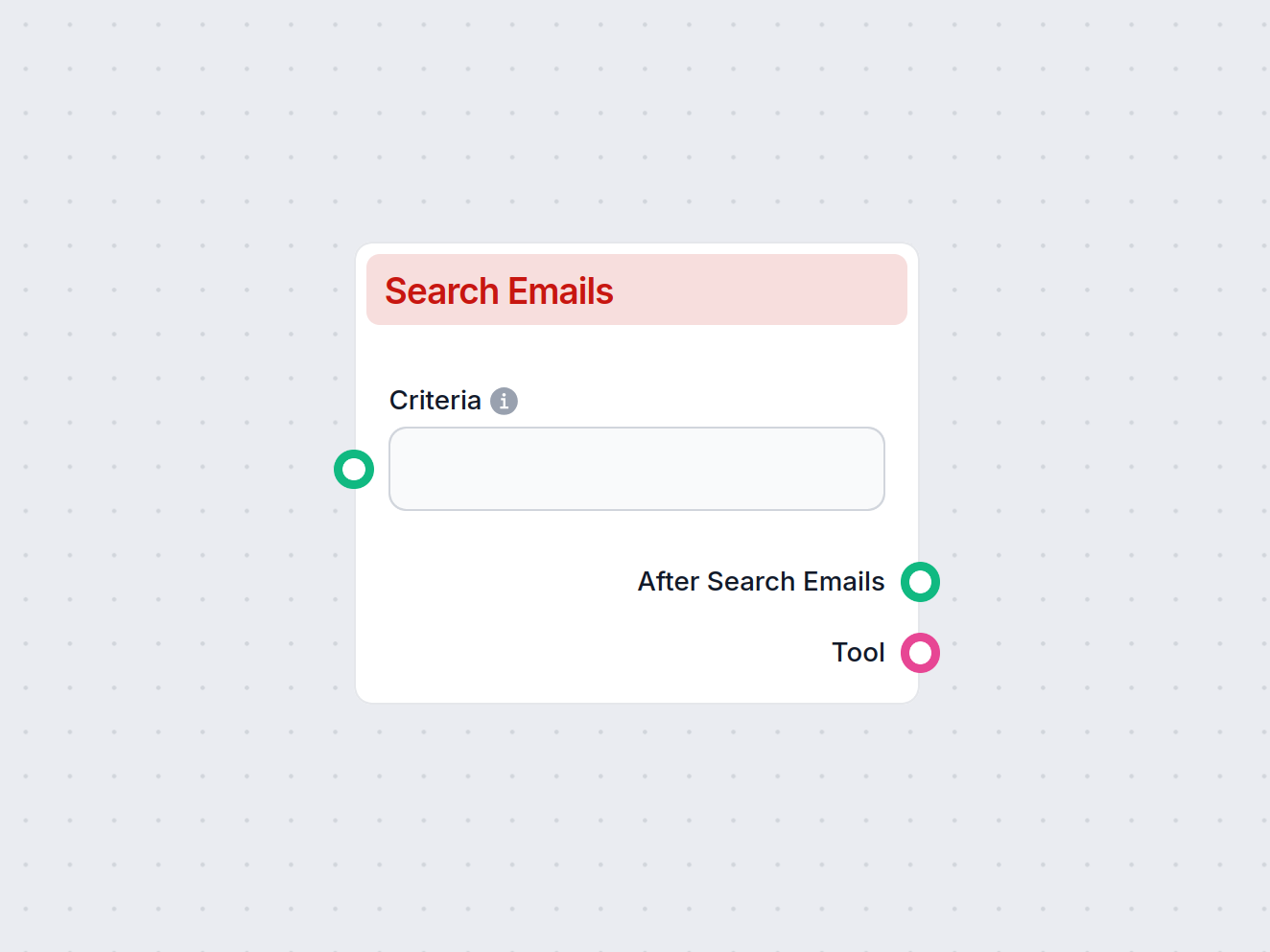
Agregar a la Memoria
Almacena fácilmente información importante en tu flujo de trabajo con el componente Agregar a la Memoria. Guarda datos o documentos de manera fluida en la memor...

El componente Buscar en Memoria permite que tu flujo recupere información de la memoria almacenada según las consultas del usuario, apoyando flujos de trabajo conscientes del contexto y orientados al conocimiento.
Descripción del componente
The Search Memory component is designed to retrieve relevant information from your workflow’s memory storage, often referred to as “Long Term Memory”. It takes a user query and searches stored documents or knowledge resources, returning the most related content. This is particularly useful for AI workflows that need to reference previous information, retrieve supporting documents, or provide context-aware responses.
| Input Name | Type | Required | Description | Default Value |
|---|---|---|---|---|
| Title | str | No | Title of the block in the output. | Related resources |
| Result limit | int | Yes | Number of results to return. | 3 |
| From pointer | bool | Yes | If true, loads from the best matching point in the document; otherwise, loads all. | true |
| Hide resources | bool | No | If true, hides the retrieved resources from output. | false |
| max_tokens | int | No | Maximum number of tokens in the output text. | 3000 |
| strategy | str | Yes | Strategy for aggregating content: “Concat documents, fill from first up to tokens limit” or “Include equal size from each document”. | Include equal size from each documents |
| threshold | float | No | Similarity threshold for retrieved results (0 to 1). | 0.8 |
| tool_description | str | No | Description for the tool, used by agents to understand its function. | (empty) |
| tool_name | str | No | Name for the tool in the agent. | (empty) |
| use_content | multi-select | No | Which content types to export (e.g., H1-H6, Paragraph). | All (H1-H6, Paragraph) |
| verbose | bool | No | Whether to print verbose output for debugging or insights. | false |
| Input Name | Type | Required | Description | Default Value |
|---|---|---|---|---|
| Lookup key | str | No | Key used to locate specific information in Long Term Memory. | (empty) |
| Input query | str | Yes | The search query to use in memory lookup. | (empty) |
The component provides multiple output formats to suit different needs:
| Output Name | Type | Description |
|---|---|---|
| documents | Message | Retrieved content as message(s) |
| documents_raw | Document | Raw, unprocessed document content |
| documents_as_tool | Tool | Documents formatted for use as a tool in agent workflows |
| Feature | Benefit |
|---|---|
| Query-based search | Finds the most relevant stored information for any user query |
| Output options | Choose between message, raw document, or tool formats |
| Custom retrieval | Control over number of results, similarity threshold, and content |
| Integrates with AI | Ideal for AI agents needing dynamic access to stored knowledge |
This component is a versatile building block for any AI workflow that requires memory search, document retrieval, or contextual augmentation.
Buscar en Memoria permite que tu flujo de trabajo obtenga información relevante de la memoria almacenada o documentos usando consultas de entrada, haciendo que tus soluciones de IA sean más conscientes del contexto.
Recupera los documentos que mejor coinciden con la consulta de entrada, con opciones para limitar el número de resultados y controlar el formato o estrategia de salida.
Sí, puedes establecer un límite de resultados, elegir qué tipos de contenido de documentos incluir y ajustar las estrategias para combinar fragmentos de documentos.
Al permitir el acceso a conocimientos previos o memoria a largo plazo, tu bot puede ofrecer respuestas más informadas, precisas y relevantes en contexto.
Absolutamente. Está diseñado para integrarse en flujos complejos donde recuperar contexto o conocimiento de datos previos es crucial para la automatización inteligente.
Potencia tus soluciones de IA integrando búsqueda y recuperación de memoria. Conéctate al conocimiento a largo plazo y ofrece respuestas más inteligentes.
Almacena fácilmente información importante en tu flujo de trabajo con el componente Agregar a la Memoria. Guarda datos o documentos de manera fluida en la memor...
El componente de Búsqueda de Documentos JSON habilita potentes capacidades de búsqueda dentro de archivos JSON, utilizando búsqueda de texto o expresiones de co...
El componente Buscar correos electrónicos te permite encontrar y recuperar automáticamente correos de Gmail según criterios específicos. Admite búsquedas filtra...

